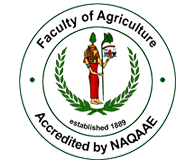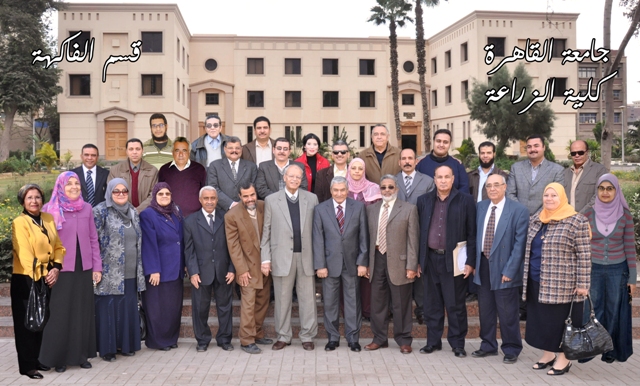Crisis and Disaster Management Unit
*Vision of the unit:
The Crisis and Disaster Management Unit at the Faculty of Agriculture, Cairo University seeks to achieve excellence in the field of crisis management at the level of Cairo University and Egyptian Universities in order to achieve the highest levels of safety in the performance of educational, research and treatment tasks.
* Mission of the Unit:
The Unit seeks to raise the awareness of students, staff, faculty and their assistants in the Faculty in managing crises, disasters, and risks, as well as encouraging research and studies in the field of crisis management related to the educational and remedial process, and the risks that may face the internal and external communities and ways to confront and limit them.
* Unit goals:
1- Spreading the culture of crisis and disaster management and educating students about their risks and ways to deal with them in an initiative way and how to act when they occur.
2- Planning and taking preventive measures to protect the Faculty from disasters and crises.
3- Developing strategies to confront crises and protect the Faculty and the environment if they occur.
4- Studying periodic reports that deal with crises and disasters and identifying ways to overcome them and how to learn and benefit from them.
5- Forecasting possible risks and crises on the Faculty campus, and identifying mechanisms to prevent them.
6- Conducting training courses, seminars and workshops to develop skills and performance to face risks, crises and disasters.
The role and tasks of the Crisis and Disaster Management Unit
at the Faculty of Agriculture
The role and tasks of the Crisis and Disaster Management Unit at the Faculty of Agriculture can be divided according to the national management system, according to the stages of disaster management, as follows:
The first stage: Pre-crisis / Pre-emergency event / Pre-disaster:
1- Analyzing the internal environment: This process aims to:
a. Diagnose threats and weaknesses in the various Faculty facilities such as classrooms, auditoriums, laboratories, stores, elevators, stairs...etc.
b. Write a report describing the reality of the facilities referred to previously, and submit it to the Faculty Administration to take the necessary measures to remedy the points of weakness.
2- Analyzing the external environment: This process aims to:
a. Analyze the environment surrounding the Faculty, identify the prospects for benefiting from it and employing its capabilities in the face of disasters and crises if they occur within the Faculty.
b. Determine mechanisms for cooperation with the organizations, bodies and departments surrounding the Faculty in the field of facing crises and disasters.
3- Planning (predicting / anticipating) crises and disasters that are likely to occur in the short / medium / long term.
4- Preparing plans and drawing scenarios to ward off crises and confront disasters.
5- Taking preventive measures to prevent / mitigate the crisis or disaster.
6- Preparing to deal with events such as training personnel and maintaining equipment.
7- Spreading cultural awareness of disaster and crisis management, and holding training workshops to raise the level and efficiency of the Faculty’s staff in this field.
8- Developing monitoring and early warning mechanisms in the field of crisis and disaster management, whenever possible.
9- Equipping an operations room for crisis and disaster management, equipped with the appropriate communication equipment.
Second: The stage of confrontation, response and containment:
1. Implementation of previously prepared and trained on plans and scenarios
2. Executing all kinds of confrontation and relief works according to the type of crisis or disaster.
3. Carrying out urgent emergency services work.
4. Executing evacuations when necessary.
5. Following up on the event and monitoring the developments of the situation on an ongoing basis, evaluating it, and determining the procedures required to deal with it through the operating room.
Third: The stage of equilibrium:
1. Calculating losses to individuals and establishments.
2. Rehabilitation and reconstruction (the stage of resuming activity) and protection from potential future dangers.
3. Evaluating the measures taken to deal with the disaster during the phase of confrontation, response, containment, and coming up with the lessons learned.
4. Documenting the event, presenting the necessary recommendations and proposals, and directing them to the concerned authorities to take advantage of them in order to avoid future negatives (if any), and to develop and update plans according to developments for better management.
Crisis and Disaster Management Plan:
The goal of the plan:
1- Upgrading the skills and capabilities of staff and faculty members in the face of crises and disasters that may occur in the Faculty.
2- Paying attention to the completion and development of devices and equipment that are used in the face of crises and disasters of all kinds.
Plan considerations:
1- National orientations.
2- Directives and demands of decision makers at the Faculty / University / Governorate level.
3- The various activities of the Faculty and the nature of its work and the possibilities that this entails.
4- Investing human cadres, devices and equipment.
5- Benefiting from the experiences gained in the Faculty.
6- Coordination with crisis management units in other Faculties and Universities.
The main themes of the plan:
1- Optimum use of devices and equipment.
2- Transfer and exchange of experiences and successful experiences in the field of facing crises and disasters, whether they are natural or as a result of emergency conditions.
3- Paying attention to the systems in which the service units operate in the different departments.
4- Increasing the efficiency of the Crisis and Disaster Management Unit and upgrading the cadres working in it.
5- Continuous training on the work of different scenarios to face crises
Examples of practical cases of University crises:
1. Students sit-in
2. Student demonstration inside the University Campus
3. Cancellation of clemency degrees
4. A fire inside a laboratory or an office
5. Destructive rumors
6. One of the elevators has broken down with students, faculty members or workers inside
7. The collapse of part of the Faculty buildings
8. How to deal with dangerous chemicals and biological materials.
9. The occurrence of chemical or radioactive contamination.
10. The occurrence of an epidemic or disease infection
Stages of organizing and managing a crisis or disaster:
1. Immediate reporting to the Crisis Management Unit at the University about the event (fire - collapse - chemical pollution, etc.).
2. Raising the degree of readiness of the competent authorities, such as: the emergency police, ambulance and civil defense
3. Calling the competent Crisis Management Team according to the type of event.
4. Securing the event area in coordination with the Traffic Department - Security and Anti-Terrorism Units - Civil Defense and Fire - Engineering Departments.....etc.
5. Gathering, analyzing and circulating primary information with specialists.
6. Informing the media in case it is necessary to be present in order to avoid the spread of rumors (local radio - television).
Do not underestimate or exaggerate the event.
7. Some members of the Crisis Management Team move to the event area to follow up and take some decisions in coordination with the Crisis Management Unit.
8. Transfer of units (ambulance - rescue teams - mechanical transport vehicles - industrial security - electricity - water - sewage - natural gas network insurance unit ...) to intervene in the handling of the event, each in its own right.
9. Gathering information and reporting it to the University's Crisis Management Center for analysis and assessment of the situation to take appropriate decisions and communicate it to the implementing agencies while reporting it to the higher level (the Council of Ministers).
10. Removing the effects of the event and restoring the situation to its original state.
11. Drawing out lessons learned and modifying previously developed scenarios










